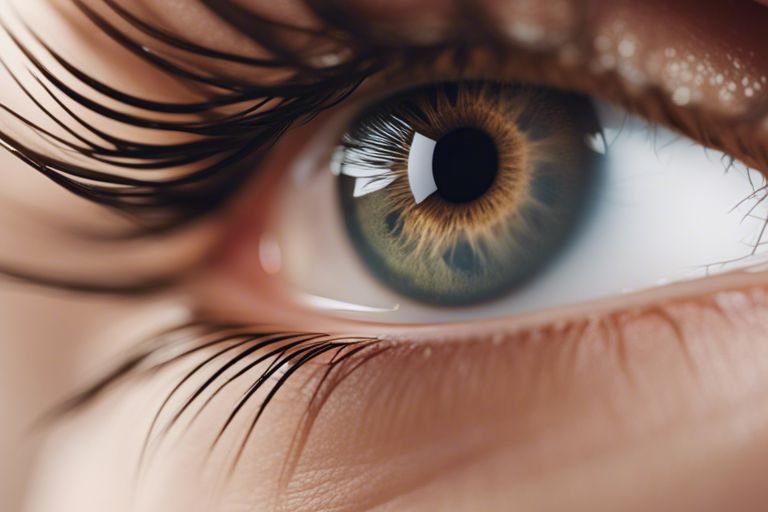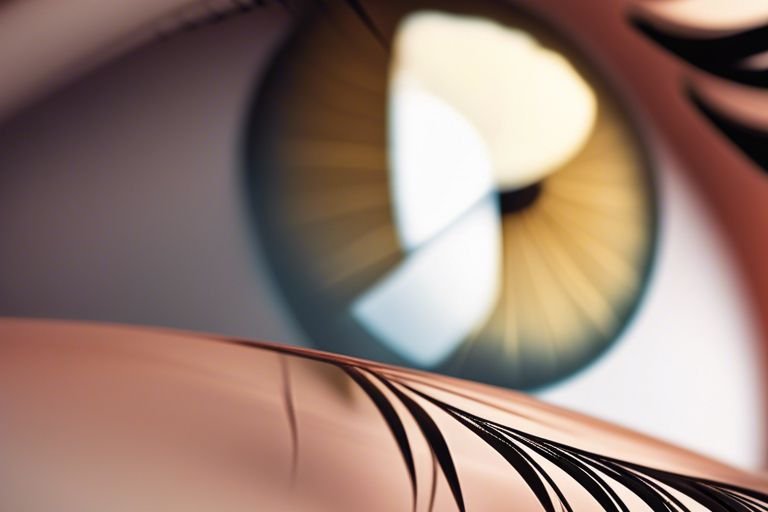Delve into the intricate world of eyelashes to uncover the truth behind their health and potential issues. While we often focus on the length and volume of our lashes, understanding their structure is crucial for maintaining their health and vitality. Despite popular belief, eyelashes can indeed develop split ends, which can lead to discomfort and even eye infections. Knowing how to identify and prevent this common problem can help you keep your eyelashes looking and feeling their best. Join us as we explore the anatomy of a healthy eyelash and uncover the secrets to achieving lush, beautiful lashes that are free from damage.
Key Takeaways:
- Eyelashes Can Have Split Ends: Just like our hair, eyelashes can also develop split ends, which can lead to them looking more fragile and less healthy.
- Causes of Split Ends: Split ends in eyelashes can be caused by various factors such as harsh cosmetic products, excessive rubbing, and poor nutrition.
- Prevention is Key: To prevent split ends in eyelashes, it is essential to gently remove eye makeup, avoid waterproof mascara, and use nourishing eyelash serums.
- Trimming Eyelashes: Trimming the tips of eyelashes can help to get rid of split ends and promote healthy growth.
- Healthy Diet: Consuming a diet rich in vitamins, minerals, and proteins can contribute to the overall health of eyelashes and prevent split ends.
- Avoiding Heat Styling: Just like with hair, excessive heat styling tools can damage eyelashes and lead to split ends. Avoid using heated eyelash curlers frequently.
- Consult a Professional: If you notice severe split ends in your eyelashes or experience excessive eyelash loss, it is advisable to consult a professional such as a dermatologist or ophthalmologist.

Biology of the Eyelash
Understanding the biology of the eyelash is crucial in grasping how to maintain their health and appearance. Each eyelash is made up of keratin, a tough protein that also forms our hair and nails. The root of the eyelash is nestled within a hair follicle on the eyelid, where it receives nourishment to support its growth.
Growth Cycle of Eyelashes
The growth cycle of eyelashes consists of three phases: anagen (growth phase), catagen (transition phase), and telogen (resting phase). During the anagen phase, the eyelash grows steadily for about 30 to 45 days before entering the catagen phase, where growth slows down. Finally, in the telogen phase, the eyelash rests for approximately 100 days before falling out and being replaced by a new lash.
Nutritional Factors Affecting Eyelash Health
Nutritional factors play a vital role in maintaining the health and strength of eyelashes. A diet rich in protein, vitamins (such as Biotin and Vitamin E), and minerals (like Iron and Zinc) can promote lash growth and prevent brittleness.
- Protein
- Vitamins (Biotin and Vitamin E)
- Minerals (Iron and Zinc)
Assume that a deficiency in these nutrients can lead to eyelash thinning, brittleness, and even loss.

Common Myths and Facts About Eyelashes
The Truth About Eyelash Split Ends
Myth: Many people believe that eyelashes cannot have split ends because they are too short and delicate.
Fact: Contrary to popular belief, eyelashes can indeed develop split ends due to various factors such as excessive mascara use, rubbing of the eyes, and poor quality extensions.
Debunking Eyelash Myths
Myth: One common myth is that trimming eyelashes makes them grow longer and thicker.
Fact: The truth is that trimming eyelashes does not affect their growth rate or thickness; in fact, it can lead to an uneven appearance and potential damage.
It is essential to distinguish between myths and facts when it comes to eyelash care to ensure that you are following the best practices for maintaining healthy and beautiful lashes.
Maintaining Healthy Eyelashes
Proper Eyelash Care and Hygiene
Proper eyelash care and hygiene are essential for maintaining healthy eyelashes and preventing issues such as infections and breakage. Always remember to gently cleanse your eyelashes daily to remove any dirt, oil, or makeup residue. Use a mild, oil-free cleanser and avoid rubbing or pulling on your lashes to minimise damage.
Additionally, avoid using harsh eyelash curlers or pulling out your eyelashes. Be mindful of the products you use near your eyes and opt for gentle, hypoallergenic options to reduce the risk of irritation or allergic reactions.
Treatments and Remedies for Stronger Eyelashes
When it comes to strengthening your eyelashes, there are various treatments and remedies that can help promote growth and resilience. Castor oil is a popular natural remedy known for its ability to nourish and strengthen lashes. Vitamin E can also be beneficial for improving lash health and promoting growth.
For those looking for more intensive treatments, eyelash serums containing peptides and vitamins can provide a boost to lash growth. However, it’s essential to choose products from reputable brands and follow the instructions carefully to avoid any adverse effects.
Using all-natural ingredients in your eyelash care routine can be a safer alternative to chemical-laden products, reducing the risk of irritation or damage to the delicate eye area. Remember to conduct a patch test before trying any new remedies to ensure compatibility with your skin and eyes.

The Anatomy of a Healthy Eyelash – Can They Really Have Split Ends?
While split ends are more commonly associated with hair on the scalp, it is indeed possible for eyelashes to develop them as well. The delicate nature of eyelashes, coupled with daily activities like rubbing or using mascara, can lead to damage and splitting. It’s essential to care for your lashes by avoiding harsh rubbing, using gentle makeup products, and removing mascara carefully to prevent split ends. Keeping your eyelashes healthy not only enhances your overall appearance but also protects your eyes from debris and irritation. Do not forget, just like the hair on your head, eyelashes require proper maintenance to stay strong and beautiful.
FAQ
Q: What are split ends in eyelashes?
A: Split ends in eyelashes occur when the tips of the lashes become frayed or split, leading to a brittle and unhealthy appearance.
Q: What causes split ends in eyelashes?
A: Split ends in eyelashes can be caused by various factors such as excessive use of mascara, curling tools, harsh makeup removers, and lack of proper nourishment.
Q: Can eyelashes really have split ends?
A: Yes, just like hair on our head, eyelashes can also develop split ends if not properly cared for.
Q: What are the consequences of having split ends in eyelashes?
A: Split ends in eyelashes can lead to breakage, thinning, and a dull appearance. It can also make mascara application challenging and affect the overall look of the eyes.
Q: How can you prevent split ends in eyelashes?
A: To prevent split ends in eyelashes, avoid rubbing your eyes, be gentle while removing makeup, nourish your lashes with oils, avoid overuse of eyelash curlers and mascaras, and ensure proper hygiene and care.
Q: Can split ends in eyelashes be repaired?
A: While split ends in eyelashes cannot be fully repaired, you can improve the condition of your lashes by trimming the tips, using conditioning serums, and adopting a healthy eyelash care routine.
Q: How important is it to maintain the health of eyelashes?
A: It is essential to maintain the health of eyelashes as healthy lashes are less prone to breakage, look fuller and longer, enhance the overall appearance of the eyes, and contribute to a vibrant and youthful look.
